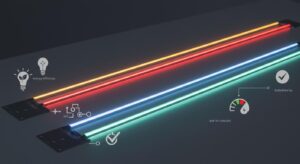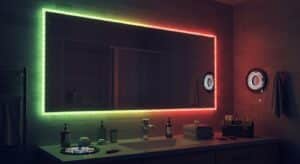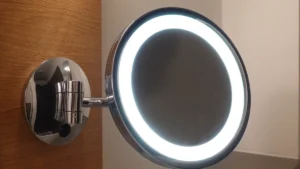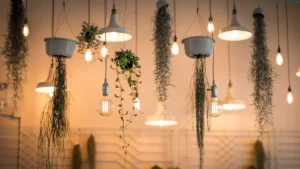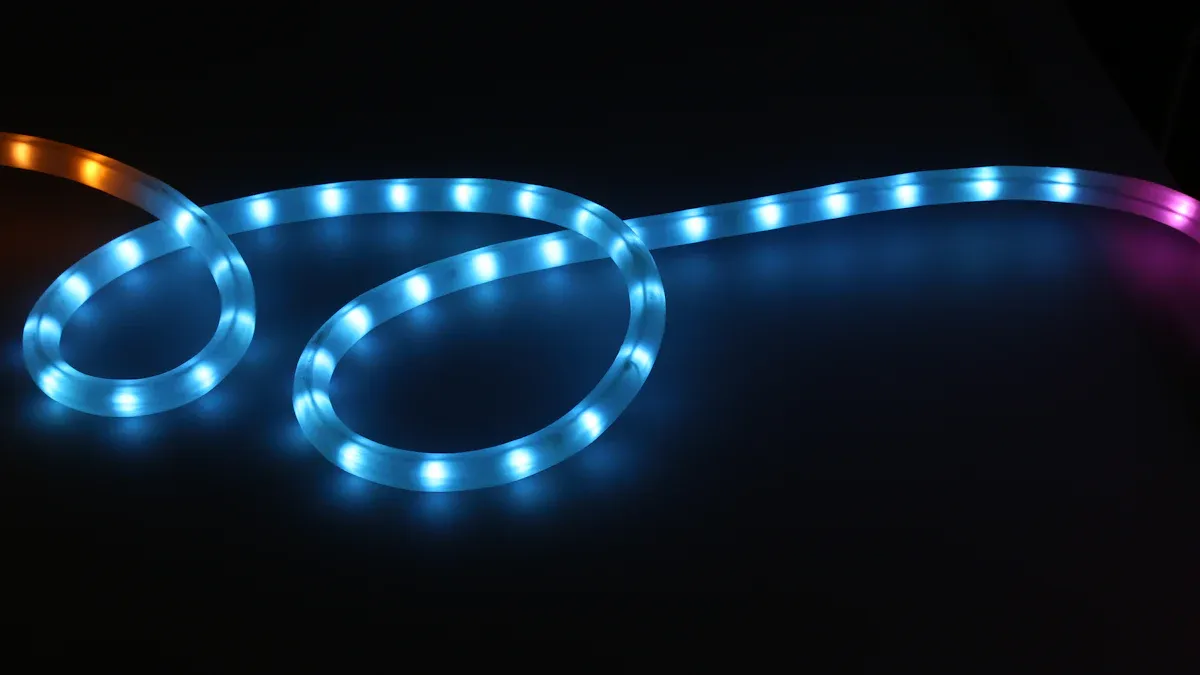
LED light strips change how we use lighting. They turn plain spaces into amazing visual shows. Their cool effects make them popular for home design, fun, and events. The market shows their rising demand. For example:
The LED strip lights market, worth USD 4.57 billion in 2024, may grow to USD 8.23 billion by 2033, with a growth rate of 7.4%.
The flexible LED light strips market might grow from USD 5.8 billion in 2023 to USD 13.4 billion by 2032, with a growth rate of 9.6%.
These lights are easy to use and very flexible. They let you be creative without much effort.
Key Takeaways
LED light strips are flexible and can change any space beautifully.
They save a lot of energy, cutting electricity costs by 80%. This helps both your budget and the planet.
Installing them is easy; just measure, clean, and stick them properly.
Use LED strips creatively in home design, gaming areas, or party lights to improve your space.
Smart features let you control the lights easily to fit your mood or style.
Features of LED Light Strips
Types of LED light strips
LED light strips come in different types for various uses. You can pick flexible, rigid, or addressable strips. Flexible strips bend easily, fitting curved or uneven surfaces. Rigid strips are strong and work well for fixed setups. Addressable strips let you control each LED. This creates effects like moving lights or colour fades.
Recent reviews show how these types perform differently. For instance, the BTF-Lighting FCOB is bright and efficient. The Pautix Tunable COB is great for cool white lighting. Below is a table comparing popular LED strip types:
LED Strip Type | Brightness (Lumens) | Efficiency (Lumens/Watt) | CRI | Voltage Drop (Volts) |
|---|---|---|---|---|
BTF-Lighting FCOB | 2185 | 1072 | 92.3 | < 1 |
WS2814 | N/A | 490-531 | 92.8 | 1.12 |
SK6812 | 2062 | 827 | N/A | 0.33 |
Pautix Tunable COB | 3681 (Cool White) | 652 | N/A | N/A |
Novostella Tunable | 1142 (Cool White) | N/A | N/A | N/A |
Onforu Warm White | N/A | 1417 | N/A | N/A |
5V Pautix COB | N/A | 652 | N/A | N/A |
Key features for stunning effects
LED light strips have features that make spaces look amazing. They are flexible, so you can use them on curves or corners. They can change colours using RGB or RGBW technology. This lets you match lights to your mood or theme. They also save energy, cutting electricity costs by up to 80%.
LED strips are built to last. New designs make them strong and weather-resistant. Smart features make them even better. You can control them with apps or voice commands. This adds ease and style to your lighting setup.
Feature | Description |
|---|---|
Flexibility | LED strips fit many shapes, perfect for creative designs. |
Colour-changing capabilities | RGB and RGBW technology let you pick colours and brightness. |
Energy efficiency | They use less power, saving money and lowering carbon footprints. |
Durability | Better designs make them last longer and resist damage. |
Smart technology integration | Smart controls make lighting easier and more advanced. |
Advanced lighting technologies
New LED technologies are changing how we use lighting. Companies like Samsung and Nichia are leading with side-emitting LEDs and special chips. These focus on better design, customisation, and saving energy.
Patented designs now give brighter lights with less heat. Customisation is also improving, with options for homes and offices. Below is a table showing recent LED advancements:
Company | Contribution to LED Technology | Key Features |
|---|---|---|
Samsung Electronics | Innovations in side-emitting LEDs with unique chip designs. | Focus on better design, customisation, and energy savings. |
Nichia Corporation | Side-emitting LEDs with excellent colour quality. | Patented designs for brighter lights and less heat. |
Emerging Trends | Customisation for different spaces. | Options for homes and offices, balancing looks and function. |
The LED strip market is growing fast. It may rise from USD 2.5 billion in 2023 to USD 7.8 billion by 2032. This growth is due to energy-saving lights and smart home tech. Designers are adding better controls, brightness, and energy-saving features.
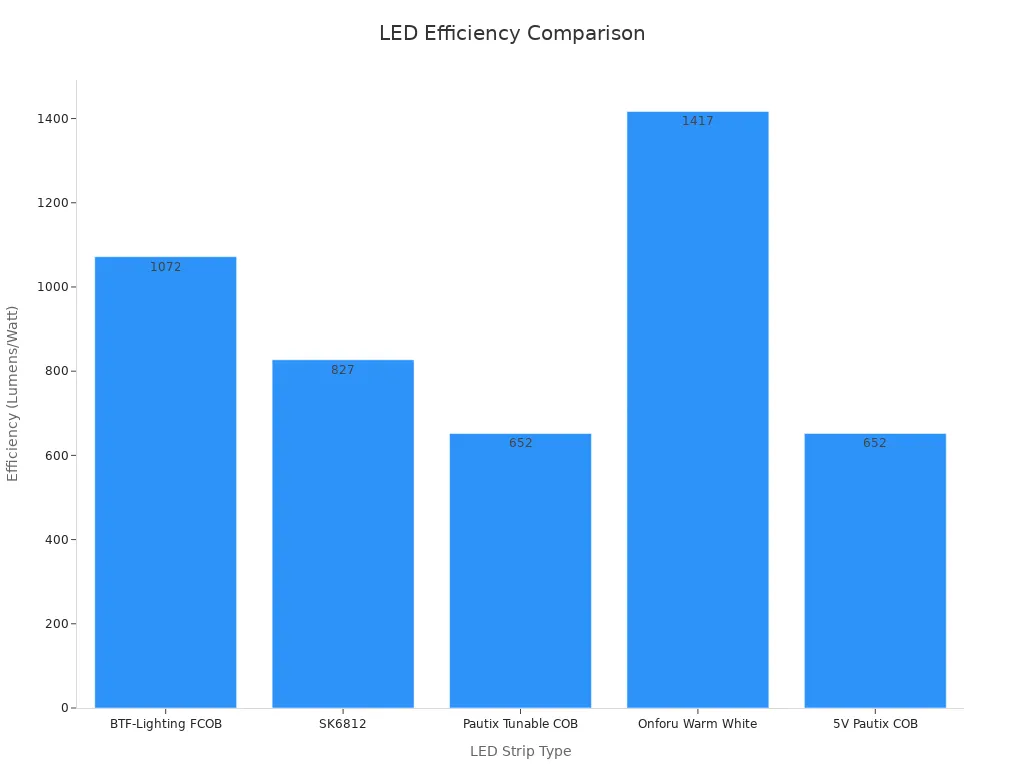
Benefits of LED Light Strips
Energy efficiency and cost savings
LED light strips use much less energy than old lights. They can save up to 80% on electricity. This means you get bright lights and lower bills. For example:
Families save about £180 each year with LED lights.
LEDs give off less heat, cutting cooling costs too. For every 3kWh saved on lighting, 1kWh is saved on cooling.
Using LED lights saves money and helps the planet. They lower carbon emissions by using less power. This reduces the need for new power plants. Many countries have stopped using wasteful bulbs to support LEDs.
Energy Source | Energy Savings | Cooling Load Reduction |
|---|---|---|
Incandescent/halogen/HID | Up to 75% less | 1kWh cooling for every 3kWh reduction in lighting |
Compact and portable design
LED light strips are small and easy to use. Their thin, sticky backing lets you place them anywhere. You can stick them under shelves, along stairs, or inside closets. They bend easily, fitting tight spots or tricky designs.
You can brighten a boring corner with these strips. They are light and easy to move around. You can reuse them for different spaces or events. Whether it’s for a party or your living room, they fit your needs.
Versatile applications
LED light strips work well in many places. In shops, they make displays look better and save energy. At home, they add style to kitchens and light up work areas. In offices, dimmable strips create a cosy feel in meeting rooms.
Application Area | Description |
|---|---|
Commercial (Boutique) | Better displays and energy savings with aluminium channels. |
Residential (Kitchen) | Stylish look and brighter workspaces under cabinets. |
Corporate (Office) | Comfortable meeting rooms with adjustable dimmable strips. |
LED light strips are great for both looks and function. Whether for work or fun, they offer endless options.
Installation and Usage
Step-by-step installation guide
Setting up a LED light strip is simple. Follow these steps:
Measure Your Space: Measure the area where you’ll place the strip. Include corners and obstacles for a good fit.
Choose LED Density and Brightness: Pick the right brightness and density for your needs. Higher density gives more light but uses more power.
Check Power Needs: Work out how much power the strip needs. Choose a matching power supply.
Clean the Surface: Wipe the surface clean and dry it. This helps the strip stick better.
Test the Strip: Plug the strip into power to check it works before installing.
Peel Adhesive Backing: Carefully remove the sticky backing so it stays sticky.
Stick to Surface: Press the strip firmly onto the surface. Bend it gently around corners.
Connect Power and Controller: Attach the strip to the power supply and controller securely.
Set Lighting Effects: Use the controller to adjust colours or dim the lights.
Final Check: Test everything to make sure it works properly.
These steps make installation easy and effective.
Tips for optimal lighting effects
To get the best from your LED light strip, try these tips:
Key Feature | Description |
|---|---|
Light Intensity | Keep the strip close to the area you want lit. Brightness fades with distance. |
Wavelength Output | Use strips with specific wavelengths for tasks like growing plants or setting moods. |
Quality of Components | Buy good-quality strips for steady brightness and less heat. |
Inverse Square Law | Remember, light gets weaker the further it travels. |
Optimal Distance | Place the strip near objects for better lighting without damage. |
These tips help you create amazing effects while saving energy.
Common mistakes to avoid
Avoid these mistakes to keep your LED light strip working well:
Wrong Connections: Loose or wrong connections can cause flickering or stop the strip from working.
Electrical Interference: Don’t place the strip near devices that cause power issues.
Low-Quality Parts: Cheap strips or drivers can give uneven light and won’t last long.
Paying attention to these points saves time and avoids problems later.
Creative Uses for LED Light Strips
Home décor ideas
LED light strips can make your home look stylish and cosy. Use them to show off special features or create soft lighting. For example, putting strips under kitchen cabinets makes workspaces brighter and adds a modern touch. Adding them to stairs or ceilings gives a gentle glow, improving the room’s feel.
More people are using LED strips for home décor. The market for home LED strips might grow from USD 1.5 billion in 2023 to USD 3.6 billion by 2032. This is a growth rate of 10.1%. Better LED technology, energy savings, and stylish designs are driving this trend. People also like smart home features and DIY projects, making LED strips a fun way to decorate.
Aspect | Details |
|---|---|
Market Size (2023) | About USD 1.5 billion |
Projected Market Size (2032) | USD 3.6 billion |
CAGR | 10.1% |
Growth Factors | Demand for energy-saving lights, better technology, and stylish designs |
Consumer Trends | Interest in smart homes, DIY projects, and home updates during COVID-19 |
Adding LED strips to your home makes it look better and saves energy. They last long and are eco-friendly, perfect for modern homes.
Gaming and entertainment setups
Gamers and movie lovers enjoy LED strips for their cool effects. Put them behind screens or desks for colourful backlighting. RGB LED strips let you pick colours and effects. You can even match them to your games or music for a fun vibe.
Using LED strips in gaming setups is becoming popular. Gamers like addressable LED strips that sync with game actions. These lights make gaming more exciting and reduce eye strain during long sessions.
In entertainment areas, LED strips set the mood for movies or parties. Place them around TV screens or under furniture for a cinema-like feel. They work with any style, whether simple or bold.
Event and party lighting
LED strips are great for parties and events. Use them to outline dance floors, decorate tables, or highlight areas like stages. They can change colours and patterns to match themes or create a festive mood.
Custom LED strips have been used in many projects. For example, a historic bridge was lit with LED strips to show its design, turning it into a night-time attraction. Warehouses also use LED strips for better lighting and safety, proving their versatility.
Project Type | Description | Impact |
|---|---|---|
Renovation of Historic Bridge | Used LED strips to highlight its design. | Turned the bridge into a night-time attraction while saving energy. |
Warehouse Optimisation | Added LED strips for better lighting and safety. | Improved safety and work efficiency, saving money. |
For parties, try effects like strobe lights or colour fades to excite guests. LED strips are easy to set up and adjust, making them perfect for unforgettable events.
LED light strips are a cool way to improve spaces. They are bendy, save energy, and have smart controls. Use them to light up your home, make gaming setups exciting, or decorate for events.
✨ Tip: Try out various colours and styles to find the best look for your space.
With some creativity, you can turn plain areas into amazing displays. Whether for work or fun, LED light strips help you create lighting that looks unique.
FAQ
Where can I use LED light strips?
LED light strips work in kitchens, bedrooms, and living rooms. Place them under cabinets, along stairs, or behind TVs. For parties, they brighten dance floors and stages. Their bendy design makes them great for decoration and lighting.
How do I pick the right LED light strip?
Think about brightness, colours, and strip type. Flexible strips bend for curves, while rigid ones stay straight. Addressable strips give cool effects. Check power needs and controller compatibility. Choose features that fit your space and purpose.
Can I cut and reuse LED light strips?
Yes, you can cut most LED strips at marked spots. Use connectors to join cut pieces again. Follow the maker’s guide for safe cutting and reuse. This helps you adjust the strip’s size for different projects.
Are LED light strips safe?
LED strips are safe if installed properly. They stay cool and use low voltage. Don’t overload the power supply or use near water unless waterproof. Correct setup keeps them safe and long-lasting.
How long do LED light strips last?
Good LED strips can last up to 50,000 hours. Their life depends on how you use and care for them. Keep them clean and avoid harsh conditions. With care, they stay bright for many years.
See Also
COB LED Strip Lights: Unleashing Your Creative Potential
Creative LED Strip Lighting Concepts for the Festive Season
Effective Installation Tips for RGB LED Strip Lights
The Unique Versatility of Zig-Zag LED Strip Lights
The Distinct Features That Set COB LED Strips Apart
